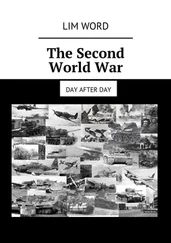The experience of the victims, who are the focus here, has not been studied satisfactorily either. A few testimonies have been published, exclusively from the Soviet occupation zone. It is no coincidence that the only personal testimonies are from the East. The descriptions were a logical follow-up to Goebbels’ horror stories about the inferiority of the Soviets and made use of the same stereotypes. In addition, they are firmly anchored in the post-war consciousness as examples of the experience of flight and expulsion and emphasis on the war crimes of the enemy. This applies in particular to a frequently cited collection of refugee stories compiled by the Federal Ministry for Displaced Persons, Refugees and War Victims in the 1950s. The use of the word ‘enemy’ alone is indication of the lack of objectivity of these documents.
To find personal testimony by women (or men) raped by Western Allies, we are reliant on chance findings in diary archives and claims for compensation by the victims. [40] The Deutscher Tagebucharchiv in Emmendingen has several dozen sources that await analysis.
These and all other personal testimonies also need to be treated with caution as they were often written to seek exoneration and were coloured by the narrative conventions of the time. A particularly opaque form of personal testimony is to be found in the applications by women seeking an abortion to the Health Department in Neukölln. They were written so as to have the best possible chance of being accepted by the authorities and doctors and cannot therefore be considered as the authentic voices of the women concerned. The same holds true of women applying for compensation after becoming pregnant as a result of rape; they are also tailored to the putative values of the authorities concerned so as to increase their chances of being accepted.
The perspective of politicians, clergymen and employees of the authorities, police officers, military judges, psychiatrists and doctors is no more reliable. They are all men who were not only subject to constraints and political priorities but were also influenced in their judgement by the ideas of morality and gender roles and characteristics of the time.
The fragmentary and unreliable sources are an obstacle to the scientific demand for comprehensive documentation and make it necessary for us to fill in the gaps ourselves. We can only attempt to make a virtue out of necessity and to use the shortcomings in the sources positively. For the period of expulsion and flight, there are printed autobiographical testimonies, which also give us an idea of the way the victims dealt with their situation; for the victims raped by Americans, we have for the most part only third-party documentation – from clergymen and political representatives – which, apart from the incidents themselves, also give us an indication of the social values at the time, particularly with regard to single women, foreigners and the socially disadvantaged. As far as women raped by the French are concerned, applications by women who became pregnant as a result provide eloquent testimony – but also demonstrate the lack of sympathy by the authorities in south-west Germany in the 1950s and 1960s. We have only a few isolated cases concerning the British, which nevertheless confirm the general picture.
We must also bear in mind the degree to which the initial research has been influenced by these methodological imponderables. The preconceptions regarding these rape victims still exist today, not least because of the uncritical and less than rigorous consideration of the sources. This will be discussed in greater detail in the last chapter of the book.
2
BERLIN AND THE EAST – CHRONICLE OF A CALAMITY FORETOLD
Many people think consciously of the things they themselves saw or had to carry out and which have to be set against what is allegedly taking place now. ‘We are guilty ourselves, we’ve earned it’ – that’s the bitter recognition that many struggle through to.
Diary of Corporal Heinrich V., 10 April 1945
[1] Sammlung Sterz, Feldpostbriefe, Bibliothek für Zeitgeschichte, Stuttgart, quoted in Ian Kershaw, The End: Hitler’s Germany, 1944–45 (London 2011), p. 312.
The fear and despair did not develop overnight. Everything gradually built up until it suddenly became unbearable… After we had been in no-man’s land for three weeks, the Russians arrived, and we had hoped so much that it would be the Americans.
Liselotte S., in a village near Magdeburg
[2] Hildebrandt and Kuballa, Mein Kriegsende , p. 221.
It is my secret, tantalizing dream, to see Berlin just once more, to feel Berlin, not as a blazing city at the front, but as a giant recovered somewhat after the war, who had been shamed and humiliated by its inhabitants and was now bowing servilely to foreigners and opening up its gates to the Soviet people, the Russian warriors, from the Brandenburg Gate to the very outskirts of the city.
Vladimir Gelfand, Red Army soldier, August 1945
[3] Wladimir Gelfand, Deutschland-Tagebuch 1945–1946: Aufzeichnungen eines Rotarmisten (Berlin 2008), p. 112.
At the start of 1945, most Germans had ominous presentiments about occupation by the Allied troops. They knew or at least had an idea of what German troops had done elsewhere and feared retribution. News at the end of the war had become scarcer and had never in any case been objective, and there were no newspapers whatsoever, so they were reliant on military reports and hearsay as sources of information as to what awaited them. All that the population heard ad nauseam was war propaganda containing horror stories about the advancing enemy troops. Leaflets announced that the ‘murderous Bolshevist rabble’ would ‘defile’ and ‘butcher’ women and girls if the German soldiers did not push them back in a last effort. [4] Christian Goeschel, Selbstmord im Dritten Reich (Berlin 2011), p. 242; more generally, Kershaw, The End , pp. 112–15, 188.
As the Red Army advanced inexorably through Silesia and East Prussia towards Berlin, Hitler himself told his Gauleiter on 24 February 1945:
What our women, children and men have suffered at the hands of this Jewish pestilence is the most cruel fate that a human mind could possibly conceive. There is only one way of responding to this Jewish–Bolshevist genocide and to its Western European and American whoremasters: with the utmost fanaticism and dogged determination to summon up the last strength that a merciful god enables people to find at a time when their lives are at stake. Those who become weak and fail should and will go under. [5] Max Domarus (ed.), Hitler: Reden und Proklamationen, kommentiert von einem deutschen Zeitgenossen , vol. II/2 (Leonberg 1988), pp. 2204–5.
Nazi propaganda had been filled for years with warnings of the ferocious revenge that the enemy would exact, particularly the so-called ‘Jewish’ revenge, often equated with the ‘Bolshevist’ threat. In his diary in summer 1941, propaganda minister Goebbels noted the words of his Führer, referring to the planned attack on the Soviet Union: ‘In any case we have so much to answer for that we must win because otherwise our entire nation, with us at its head, will be eradicated along with everything that is dear to us. So let’s get to work!’ [6] Elke Fröhlich (ed.), Die Tagebücher von Joseph Goebbels, Teil I, Aufzeichnungen , vol. 4 (Munich 1987), p. 696.
Hitler’s view that, if Germany were to lose the war, the German people, starting with the women, would also be lost, was repeatedly circulated.
When the war did enter its final phase and the Allied troops set foot on German soil, it was not at all clear right up to the last moment in many regions which of the victorious powers would arrive to become the new occupiers. Rumours abounded, but one thing was evident: the first encounters would be between young Allied soldiers on the one hand, and German women and children, old men and those unfit for service on the other. Of the German population awaiting the arrival of the Allied troops, 60 per cent were women and children and men under sixteen or over forty years of age. [7] Christel Panzig and Klaus-Alexander Panzig, ‘“Die Russen kommen!” Deutsche Erinnerungen an Begegnungen mit “Russen” bei Kriegsende 1945 in Dörfern und Kleinstädten Mitteldeutschlands und Mecklenburg-Vorpommerns’, in: Elke Scherstjanoi (ed.), Rotarmisten schreiben aus Deutschland: Briefe von der Front (1945) und historische Analysen ( = Texte und Materialien zur Zeitgeschichte 14, published by the Institut für Zeitgeschichte) (Munich 2004), pp. 340–68.
Читать дальше











